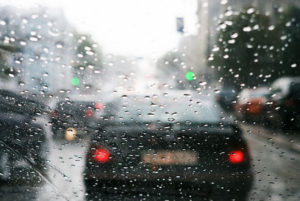
The streets are busier as more people drive to avoid the rain and the roads become slippery. There’s the water itself, but the rain also brings oil and other slippery muck to the surface.
It’s harder to see the road ahead, your windscreen becomes foggy and your brakes are less effective.
It’s no surprise that in the wet weather there are more prangs, but there are some simple things you can do to avoid getting into trouble.
Slow down
It seems obvious, but it’s always a good idea in wet weather to ease up on the gas.
You should also increase the distance between you and the cars ahead.
In normal conditions, it’s recommended that you leave a three second gap – in the wet, try to double this.
Take it easy
You need to take extra care in all aspects of your driving. Accelerate and steer smoothly. Avoid slamming on the brakes – apply steady pressure.
Look out
Make sure you can see and be seen. Turn on your lights and use your air conditioner and/or demister to keep your windows from fogging up.
In heavy rain, you’ll wish you had replaced those worn old windscreen wipers. Before that happens, check out whether you need new ones – they’re cheap to buy and easy to install.
Watch out
Keep an eye out for water on the road. Sometimes water can gather in dips or unseen potholes, creating deceptively deep pools.
Cars have been known to ‘aquaplane’ after hitting water like this (that is, ‘glide’ out of control across the road).
If you do come across water across the road, then cut your speed right back to 30 or 40km/h. After you’ve driven through, touch your brakes lightly to dry out the brake pads.
Obviously, if there’s water flowing across a road in a low-lying country area, for example, you should stop and check the depth before continuing (it shouldn’t be higher than the lowest point on the wheel rim).
Patience
The most important thing is to be patient. When it’s raining and chaotic, everyone’s in the same boat…
